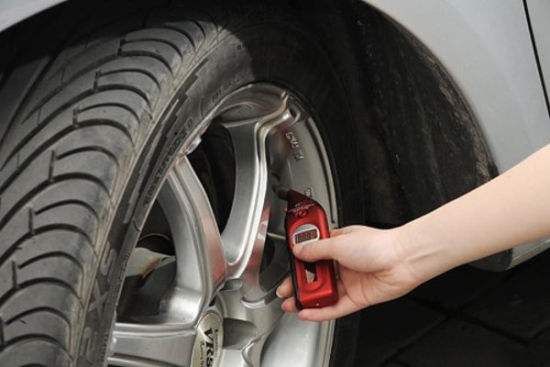As the only part of the vehicle in direct contact with the ground, the safety of the tire is directly related to the personal health and safety of the personnel in the vehicle. Accidents caused by tire failure account for a large proportion of traffic accidents. Therefore, doing a good job in the daily inspection and maintenance of tires, timely maintenance and replacement of tires is a necessary measure to ensure driving safety.
Precautions for use and maintenance of automobile tires
1. How often is the tire pressure checked?
Check the tire pressure at least once a month or before each long-distance trip, including the spare tire. The tire pressure shall be checked when the tire is cold, that is, it shall be checked after parking for at least three hours. If necessary, the tire pressure shall be supplemented to the pressure specified on the vehicle notice board. Because the reading of the cold tire is the most accurate, you should drive to the nearest inflation point as far as possible to inflate. Do not deflate or depressurize hot tires. It is normal for the tire pressure to be higher than the recommended cold inflation pressure after driving temperature rise. If you reduce the tire pressure of hot tires, the tire pressure after cooling will not be enough.
In addition, check the tire pressure with a high-quality barometer and don't trust your eyes too much. You cannot judge whether the inflation pressure of the tire is correct from the appearance.

2. How do you know it's time to change the tire?
If the tire "wear indicator" in the groove indicates that the groove depth is less than 1.6mm, it is recommended to replace the tire. The tire wear indicator is the bulge in the groove. When the tread is worn to 1.6mm, it will be flush with the tread. You won't be wrong.
If tires with grooves less than 1.6mm deep are used, there will be a sudden loss of traction and braking force in rainy days and no traction in snowy days. If you can replace the tire before it is worn to 1.6mm, you should not have the above problems. In snowy areas, it is also wise to replace the tires before they are worn to this limit. In deep snow, tire tread shall have the ability to compact and throw out the snow.
3. Four wheel alignment shall be carried out in time for tire eccentric wear
The specification of eccentric wear is called unilateral wear, which is generally caused by excessive outward or inward inclination of the wheel due to poor wheel alignment. It is necessary to correct the wheel four-wheel alignment to eliminate the tire eccentric wear caused by poor four-wheel alignment.
If you continue to drive after the tire is eccentric worn, it will cause abnormal vibration of the vehicle and affect the handling performance of the vehicle. If the four-wheel alignment is not carried out in time, the partially worn tire will soon be scrapped due to severe local wear.
4. How to deal with a flat tire:
If the rear wheel has a flat tire, the car will tilt to the side of the flat tire. At this time, you need to: hold the steering wheel; Keep the vehicle straight as far as possible, and sharp turning may cause the vehicle to lose control or overturn; Do not step on the clutch and accelerator pedal; Slowly press the brake pedal (do not brake suddenly, otherwise the car will rotate or roll over); Drive to a safe place on the roadside;
When changing tires on the roadside, pay attention to: park the car at a safe place on the roadside and turn on the hazard light; Put the gear to the first gear (the automatic vehicle is in the P position) and pull the hand brake.


